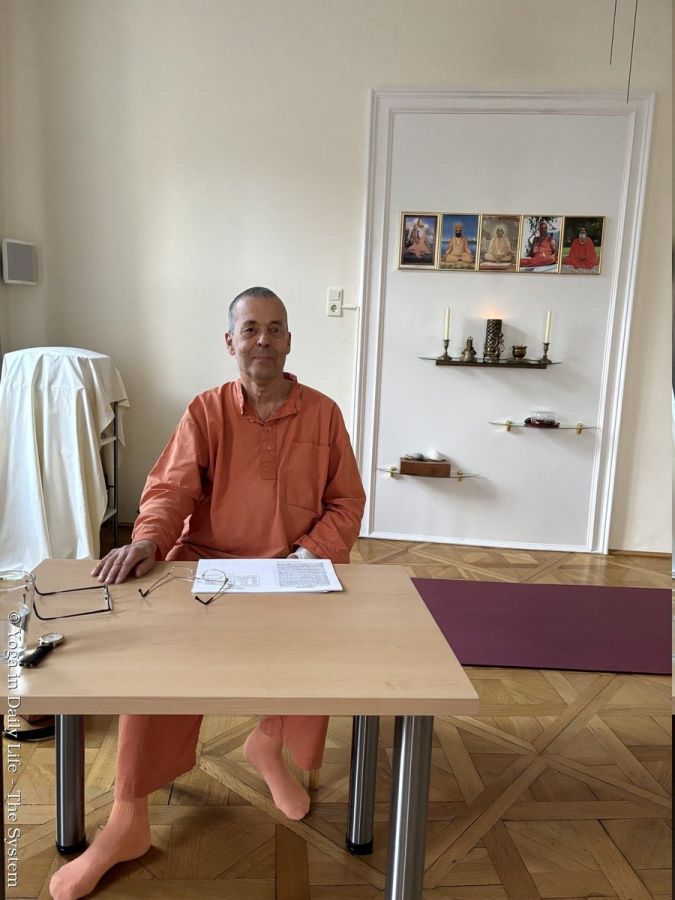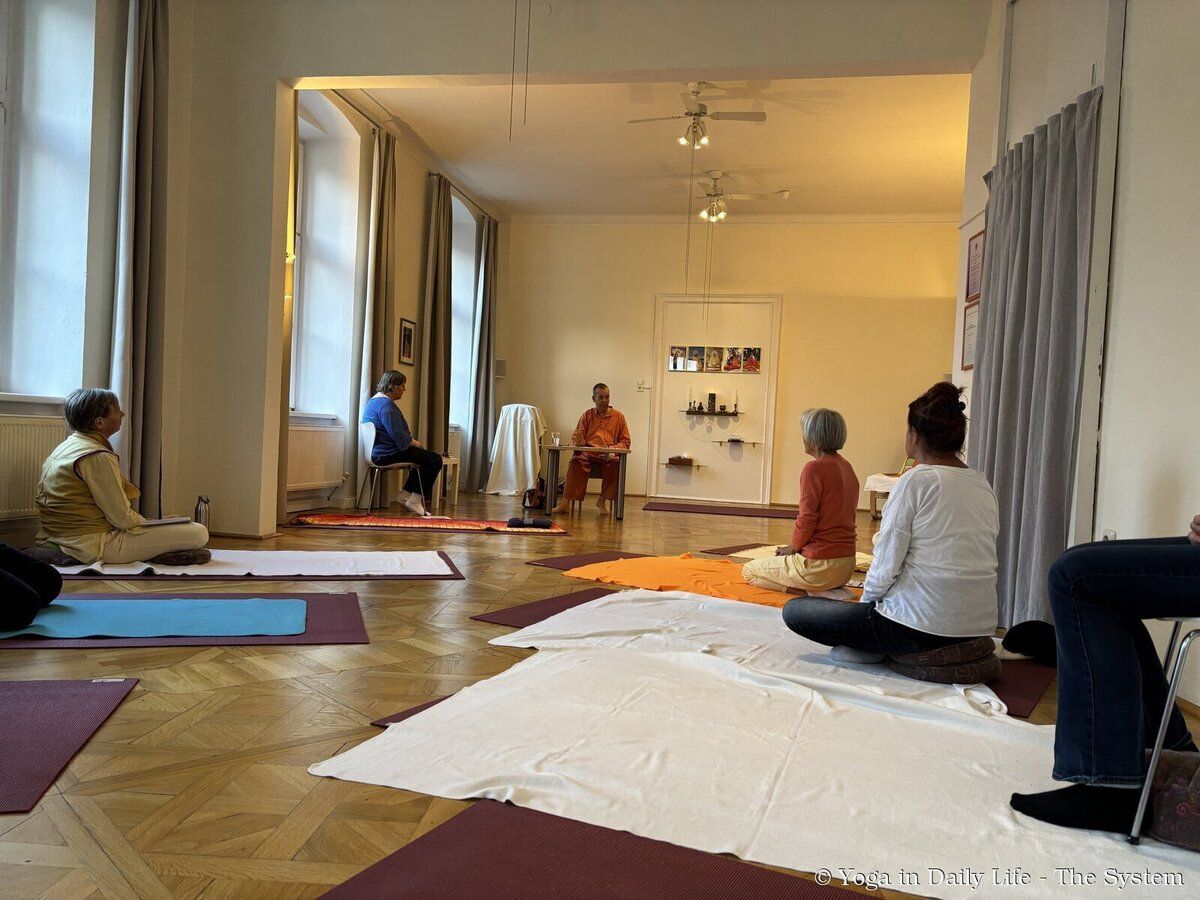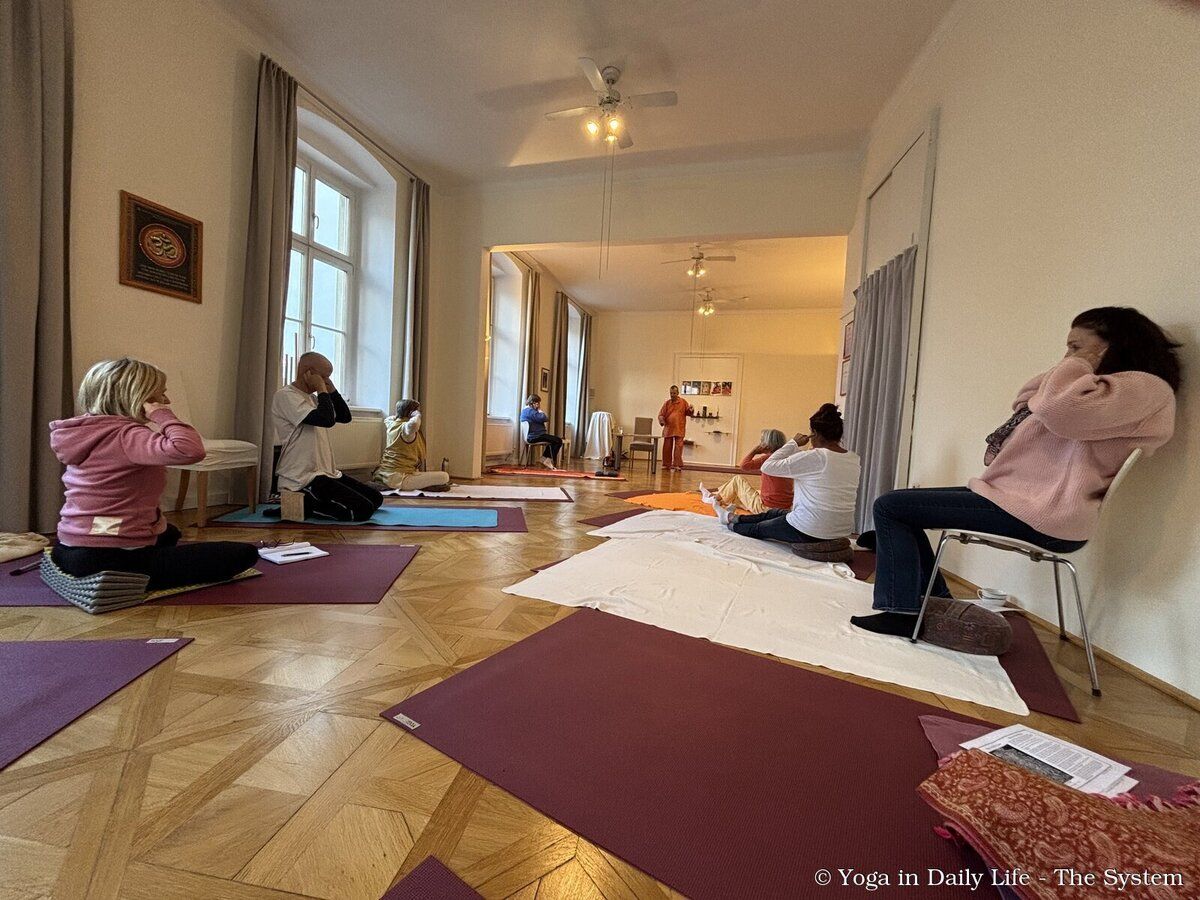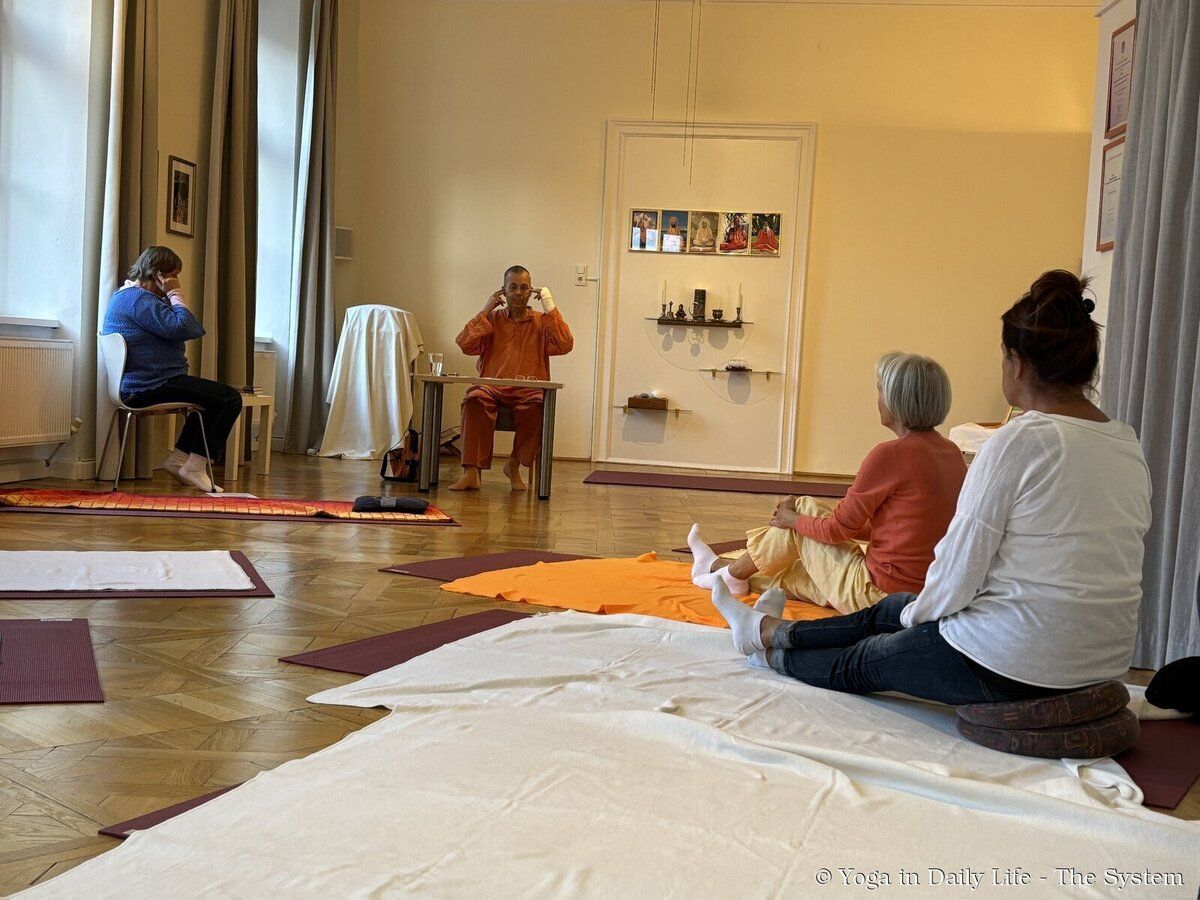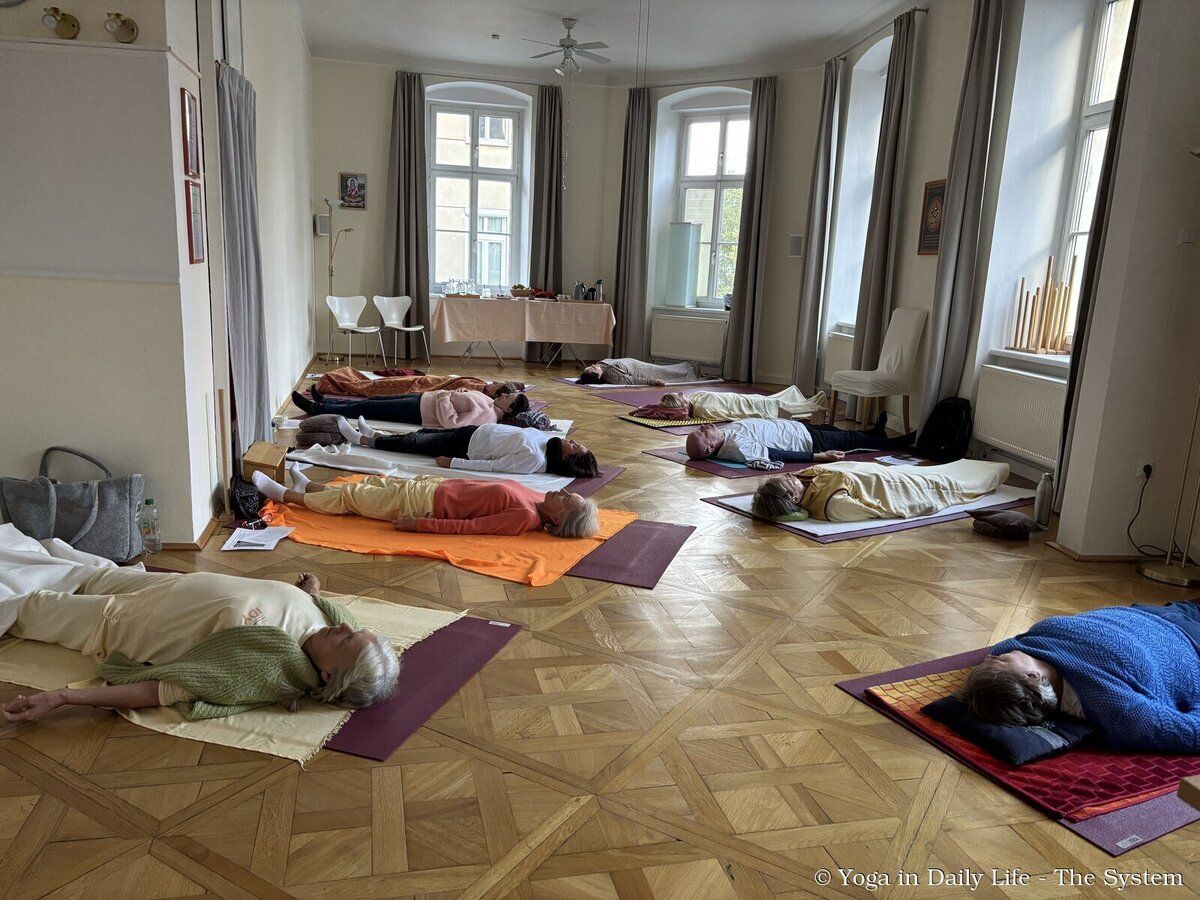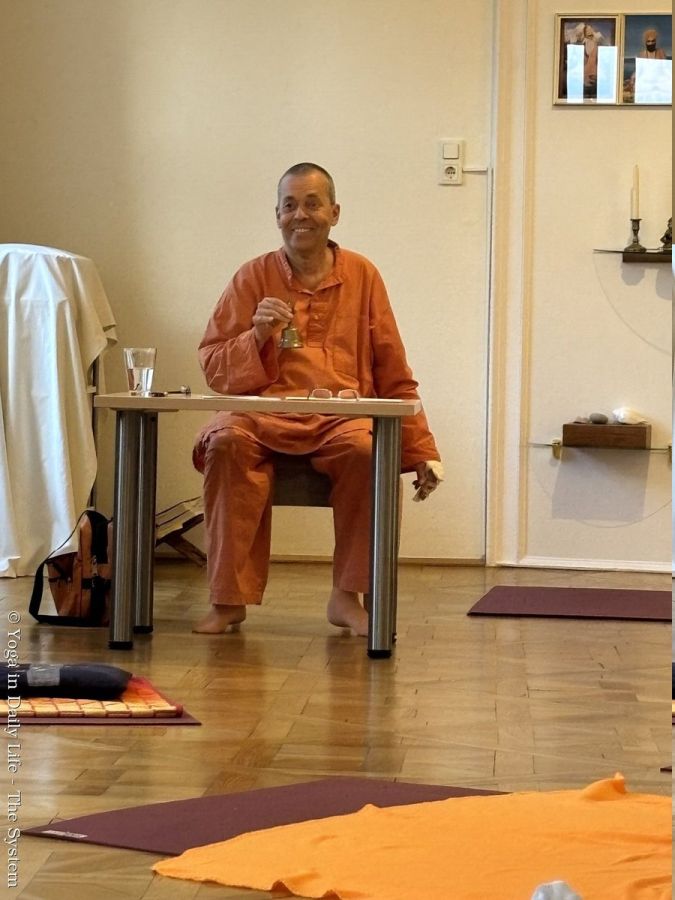Prana – Our Life Force
A Workshop Based on Yoga in Daily Life – The System with Swami Gajanand Ji
On 5 October 2025, an inspiring program took place in Linz, Austria, with Swami Gajanand Ji, dedicated to the topic Prana – Our Life Force. The program was based on the Yoga in Daily Life System by Vishwaguru Mahamandaleshwar Paramhans Sri Swami Maheshwarananda (Vishwaguruji) and focused on understanding and experiencing prana, the universal life energy that permeates and sustains all beings.
Vishwaguruji often emphasises that prana is the vital force that makes life possible and that where prana flows freely, there is health, joy and consciousness. Thus, this program was of great importance for all participants, offering valuable insights into the nature of life energy and its role in maintaining physical, mental and spiritual well-being.
Theoretical Understanding of Prana
In the theoretical part of the workshop, Swami Gajanand Ji explained the nature of prana in both its gross and subtle forms, showing how this vital energy influences the body, mind and emotional balance. Participants explored how prana can be consciously regulated and harmonised through yoga practices, particularly through pranayama.
Swami Gajanand Ji described how prana is absorbed through the breath, food and skin, and introduced the five main forms of life energy that govern the body and all life functions:
- Prana – the absorbing energy, flowing from the nose to the heart region.
- Apana – the descending energy, active from the navel downwards.
- Samana – the balancing energy in the navel centre, responsible for digestion, equilibrium and inner harmony.
- Vyana – the circulating energy, flowing through the nervous system and the nadis, active throughout the body.
- Udana – the ascending energy, uplifting the mind and essential for spiritual growth and the awakening of kundalini.
Vishwaguruji beautifully expresses the connection between the five pranas, comparing the five pranas to five streams of a single river, and when they flow in harmony, health and peace arise. Swami Gajanand also highlighted the importance of kumbhaka, the retention of breath, and explained its powerful influence on the flow and control of prana.
Practical Experience
In the practical part of the workshop, Swami Gajanand guided participants through a series of pranayama breathing techniques, mudras and bandhas designed to purify the nadis (energy channels), balance the nervous system and awaken subtle awareness of prana:
- Nadi Shodhana Pranayama (Levels 1–4): cleanses the energy channels and promotes inner balance.
- Bhastrika Pranayama: invigorates body and mind and stimulates circulation.
- Ujjayi Pranayama: regulates blood pressure and supports detoxification.
- Bhramari Pranayama (Bee Humming): calms the nerves, enhances concentration, and brings deep inner peace.
- Ashwini Mudra: aids in bringing unconscious patterns into awareness.
- Agnisara Kriya and Nauli: energising practices performed only on an empty stomach, revitalising the digestive system.
- Mula Bandha: balances the autonomic nervous system, relaxes the mind, and awakens the kundalini shakti.
- Viparitakarani Mudra: directs the flow of energy upwards, supporting spiritual development.
Practitioners were reminded of Vishwaguruji’s teaching that the targeted guidance of prana in the body helps to increase vitality, detoxify the system, strengthen the immune response, and bring about inner peace, relaxation and mental clarity.
Special Prana Meditation
The session concluded with a special prana exercise similar to Yoga Nidra, a technique taught by Vishwaguruji. In this practice, participants consciously guided the flow of prana through the body, for example, from one hand or foot to the navel during inhalation, and from the navel outward during exhalation. Vishwaguruji once said that by breathing consciously, we can experience the very source of life within ourselves.
This technique centralises prana in the Manipura Chakra (Navel Centre), where all ten types of prana, five Pranas and five Upa-Pranas, are interconnected. It requires deep concentration and awareness, resulting in a balanced and harmonious flow of energy throughout the body.
Reflection and Gratitude
After the program, participants felt calmness, clarity and renewed inner strength, a clear indication that their energy had become more harmonious and balanced. The workshop concluded with a deep sense of gratitude and inspiration.
Participants left with the realisation that prana is not merely the breath, but consciousness in motion, a living bridge between body and soul. Vishwaguruji often reminds us that Yoga in Daily Life is the way of feeling the Divine in every breath.
Heartfelt thanks were given to Swami Gajanand Ji from the Linz practitioners, for sharing his profound knowledge and for guiding them through such a deep experience of feeling prana within.
